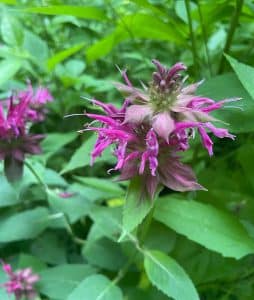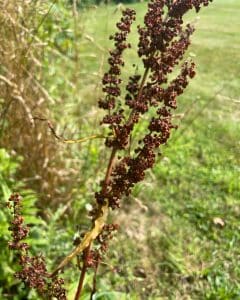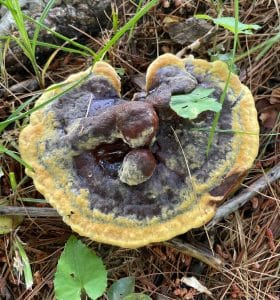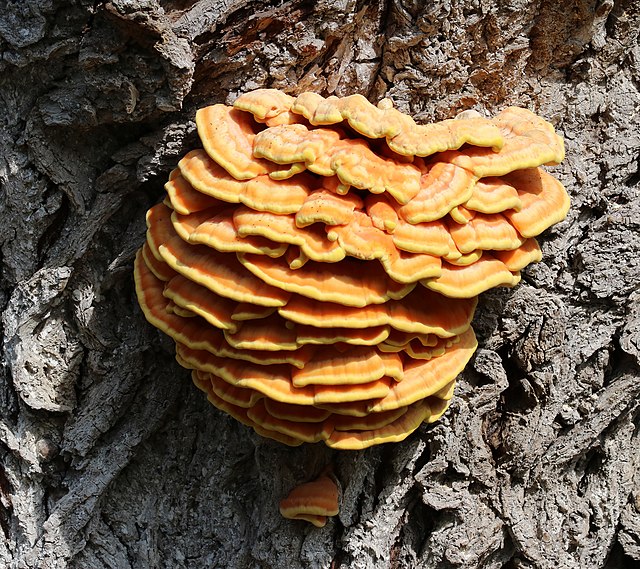
There’s really nothing like chicken of the woods (Laetiporus spp.). Also known as the sulfur shelf, this large mushroom looks quite a bit like a big stack of orange and yellow pancakes bursting out of the side of a tree. In larger flushes, you might find more than a dozen individual “shelves” growing out of the same spot. There are several species in this genus; most tend to be yellow and orange, though certain species may be uniformly yellow or paler shades of orange and cream, and colors may fade a bit on older specimens. The underside of the mushrooms feature pores rather than gills, and are generally lighter in color than the top side. Some may be upwards of a foot across, though most are smaller.
Laetiporus species are saprotrophs that break down decaying wood, and some may actively parasitize living trees whose immune systems are compromised. They are more commonly found on hardwood trees, though some such as L. conifericola, grow on conifers. They typically fruit in summer and fall, and often can be found near the base of their host trees.
Laetiporus Species
There are several species in this genus; here are a few of the more common ones sought out by foragers:
L. sulphureus: Once considered to be found across North America, several species were later split off from this common fungus. It’s now thought that L. sulphureus primarily occurs east of the Rockies on hardwood trees.
L. huroniensis: One of the newly defined species, this one prefers old growth conifers in the Great Lakes region.
L. cincinnatus: Another orange and yellow mushroom, this one primarily grows at the base of oak trees. It is restricted to the eastern half of the United States.
L. conifericola: A western species, this is one that grows on conifer trees, and is one of the species that seems to be particularly common for gastrointestinal upset.
L. gilbertsonii: This is another species found on conifers. It also grows on eucalyptus trees, which are commonly found in California as a non-native species.

Debatable Edibility
Most sources consider chicken of the woods mushrooms to be edible–with conditions. A minority of people who consume this mushroom may experience gastrointestinal distress, and in some cases neurological effects like dizziness or disorientation may occur.
There are several hypotheses as to what causes these issues. Some blame compounds in conifer trees (and in California, eucalyptus trees) that may be absorbed into the mushrooms. Others suggest it may be an allergic reaction to proteins in the fungus. Still others think it’s due to eating chicken of the woods that are too old.
Whatever the reason, this is one edible mushroom to be cautious about when you’re trying a particular species for the first time. Make sure you cook it thoroughly, and eat only a small amount at first. If you have any negative reactions, it’s best to not eat any more.
Foraging for Chicken of the Woods
Forests, of course, are the best place to look for chicken of the woods. Those of us on the west coast should mainly be looking for conifer forests; folks further east may look for hardwoods or conifers depending on what Laetiporus species are in your area. Younger mushrooms are better, as the older ones get tough and can cause indigestion even when cooked thoroughly. You may find multiple flushes of chicken of the woods on the same tree, so make sure you check the entire trunk just in case.
This mushroom gets its name because its mild flavor is said to resemble chicken, sometimes with a hint of citrus or seafood. It absorbs sauces, seasonings, and other flavors well, and has a meaty texture that makes it a good vegan meat substitute. It is versatile and can be used in a variety of recipes calling for mushrooms or even chicken. If you pick more than you can reasonably eat, they’re best preserved by lightly sauteeing them for a few minutes, then freezing them.
Again, due to the frequency of reports of gastrointestinal distress and other symptoms caused by consuming chicken of the woods, it’s best to start with a small amount the first time you try a particular species. Most of the time symptoms will show up within the first twenty-four hours; if this mushroom does make you sick, it’s best to avoid it in the future.
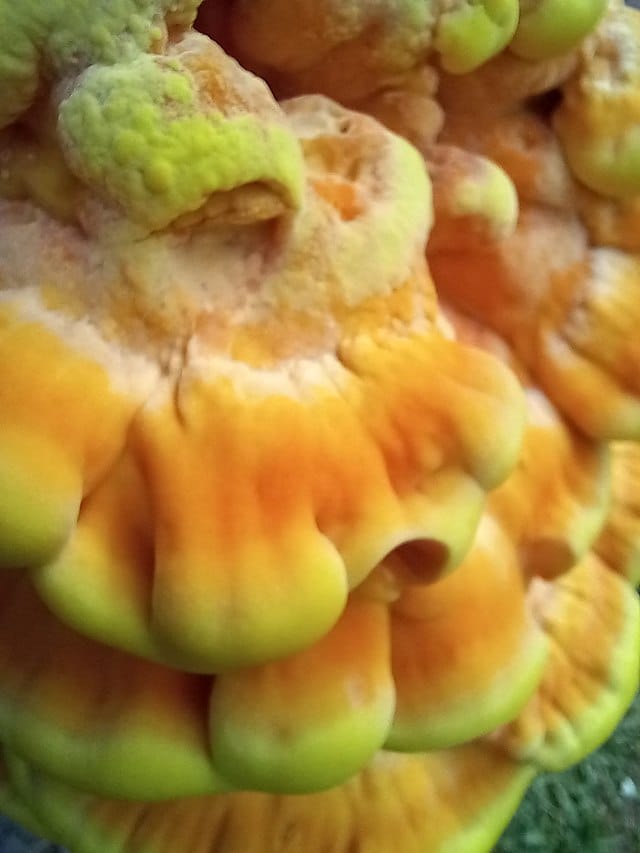
—————
Written by Rebecca Lexa
Rebecca Lexa is a certified Master Naturalist in the Pacific Northwest. She teaches classes on foraging and other natural history topics, both online and off. More about her work can be found at http://www.rebeccalexa.com.
Many of our readers find that subscribing to Eat The Planet is the best way to make sure they don't miss any of our valuable information about wild edibles.
See our privacy policy for more information about ads on this site

